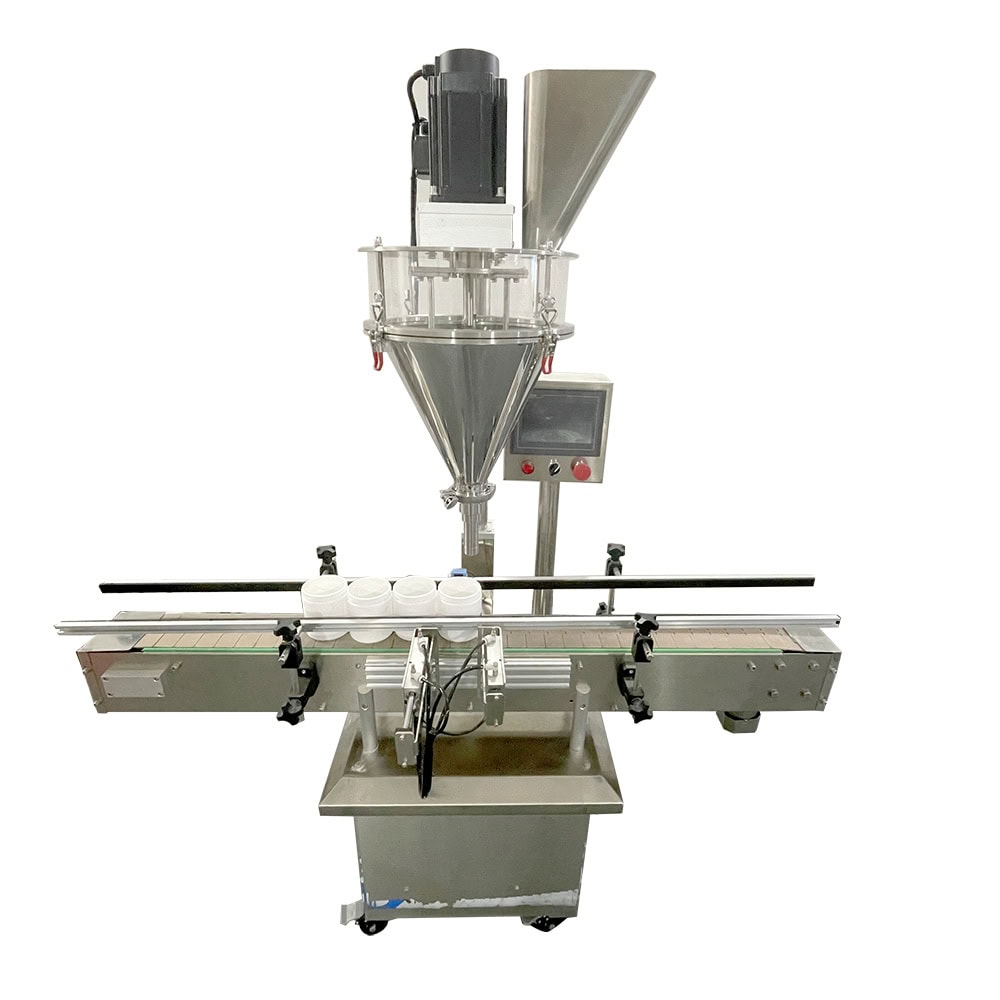Efficiently managing the filling process of powdered products can be challenging without automation, often resulting in inconsistent quantities and spillage. A powder filling machine offers precise, reliable, and fast operations, ensuring quality control and cost-efficiency.
A powder filling machine automates the precise dosing and dispensing of powdered materials into containers, ensuring accuracy, speed, and quality across industries like food, pharmaceuticals, and chemicals.
Understanding the functions and benefits of powder filling machines can revolutionize how businesses handle packaging, ensuring accuracy and scalability.

Overview of Powder Filling Machines
Powder filling machines are highly specialized equipment designed to automate the process of measuring and dispensing powdered materials into containers. These machines are used in various industries, including food, pharmaceuticals, and cosmetics, and can handle powders of different consistencies, from free-flowing to dense and non-free-flowing.
The equipment typically comprises a hopper for powder storage, an auger or vacuum mechanism for dispensing, and precise controls for ensuring accurate and consistent fills. Powder filling machines are available as standalone units or integrated into complete packaging systems, such as a packaging machine.
How Powder Filling Machines Work
Powder filling machines operate by using a combination of mechanical and electronic systems. The powder is stored in a hopper and dispensed into containers via an auger, volumetric cup, or vacuum-based filling system. Modern machines often feature sensors that detect container presence, ensuring error-free operations.
Advanced models are equipped with PLC control systems, enabling operators to customize filling parameters like speed and quantity. These features ensure efficiency and minimize product waste, critical for industries handling expensive powders like pharmaceuticals or luxury cosmetics.
Types of Powder Filling Machines
Volumetric Fillers
Volumetric fillers dispense powder based on pre-set volumes. They are ideal for applications where weight precision is less critical.
Weight-Based Fillers
Weight-based fillers use precision scales to ensure the exact amount of powder is dispensed. This type is common in industries requiring strict quality control.
Vacuum Fillers
Vacuum fillers are used for lightweight powders prone to air pockets. These machines ensure smooth filling and compact packaging, making them ideal for products like protein powders.

Applications in Different Industries
Powder filling machines are versatile and used in various sectors:
- Food Industry: Filling spices, protein powders, and drink mixes.
- Pharmaceuticals: Dispensing medicine powders and nutritional supplements.
- Cosmetics: Handling talcum powder and loose makeup powders.
- Industrial Applications: Packaging detergents and other chemical powders.
In many cases, powder filling machines are paired with complementary equipment like a labeling machine or vacuum packaging machine to create a seamless production line.
Benefits of Using a Powder Filling Machine
Improved Accuracy
Powder filling machines are designed to minimize errors. They can achieve an accuracy level as high as ±0.5 grams, making them indispensable for high-value products.
Enhanced Efficiency
By automating the filling process, these machines significantly reduce manual labor costs and boost production speed. For example, a powder filling machine integrated with a bottle labeling machine can enhance overall workflow efficiency.
Hygiene and Compliance
The machines are designed to meet stringent hygiene standards, particularly for food and pharmaceutical applications. Stainless steel construction and easy-to-clean components ensure compliance with safety regulations.

Customization and Versatility
Modern powder filling machines are highly customizable. Operators can adjust parameters to accommodate different powder consistencies, container sizes, and production volumes. Some machines even offer modular upgrades, enabling users to add features like integrated capping or a barcode printer.
Scalability for Production
Whether for small-scale businesses or industrial operations, powder filling machines cater to varying production needs. Semi-automatic machines are ideal for startups, while fully automatic systems are suitable for high-volume production lines. Many large-scale operations pair their machines with a shrink wrap machine or other automated solutions to optimize their packaging process.
Cost Efficiency
While the upfront cost of powder filling machines can be high, the long-term savings in labor, waste reduction, and increased output justify the investment. Companies handling high-value powders, such as pharmaceuticals, often see a rapid return on investment due to the precision and efficiency of these machines.

Maintenance and Operational Ease
Most powder filling machines are designed for durability and ease of maintenance. User-friendly interfaces make it simple for operators to adjust settings, troubleshoot issues, and maintain optimal performance. Regular maintenance schedules can further extend the lifespan of these machines.
Conclusion
Powder filling machines streamline production by automating precise filling processes, supporting scalability, and ensuring consistent quality. For industries aiming to improve productivity and maintain high standards, these machines are a critical investment. Pairing them with other advanced equipment like customized labeling machines or capping machines can further enhance efficiency and product appeal.









